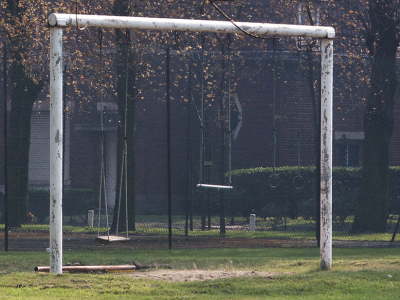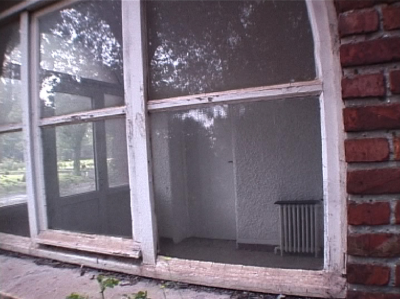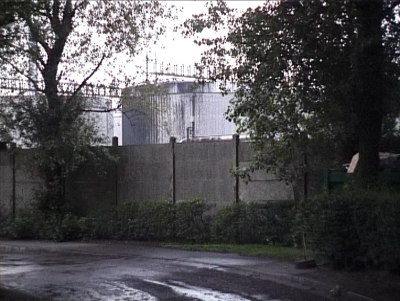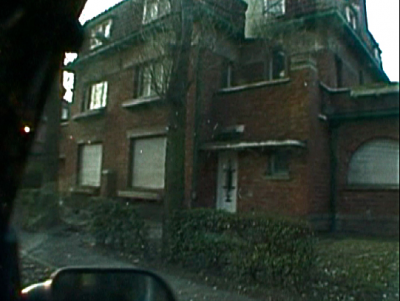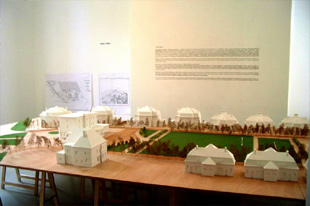
Model City
FRAC Nord Pas Calais
Dunkerque
2002
Model CityThe BP area, called 'la cite des ingenieurs' is located in the harbor area of Dunkerque, just 100 meters away from the oil refineries. This housing area, within easy reach of this heavy industry, reflects the ideas of the modernist architecture of the garden village, with its lay out of green, space, and spacious houses.
This housing area also reflects ideals - and their ambiguity - of the 20th century western thinking in urban and industrial planning: people live near their work, and in such a way engage with it and are available all the time.
The lay out of the area aims to generate a sense of 'neighbourhoodness' which can also be seen as paternalistic: communal playground, communal tennis court, communal spaces, and of course the company as a social working area.
The social positions the inhabitants were taking inside the BP company correspond with the size of the house they used to inhabit. In this scale model of the 'cite des ingenieurs' the hierarchy becomes apparent in the different size of the buildings.
The area is a city of dreams, imbued with optimism and a strong belief in the increasing development of mankind, endless economical
growth and welfare for everybody, with the production of oil as the motor behind this.
Since 4-5 years this area has been deserted: pollution appeared to be at such an intolerable level that it was considered irresponsible to
allow people to live there any longer. During the past years, the area has been maintained in a representable state: the houses are well kept, the grass of the lawn cut, and the children's playground looks like the children will return any minute.



secretly this area seems to be functioning as a critical model, a monument. Not only as a memory for an architectural practice but by 'just being there', la cite des ingenieurs represents a way of thinking and acting, in the flow of time, incorporating, in a sense, all these different layers of the nature of its idealism, history, life and critique. Projecting the architecture of the 'cite des ingenieurs' in a model, it will, ideally, function as a platform, as a discursive piece, as a tool which might generate reflection on the different issues that can be found in these layers.
Being disguised as an architectural form, it raises questions about the nature of living, about institutionalization, about 'capitalistic economic space' and about the public and private sphere. Now that is impossible to live there or to make these houses productive in any other way, this model takes a critical status, by placing memory back in the archive of knowledge again, using the space of this model as a vehicle for recovering and tracing this memory.
A model is normally preceding the architectural reality, to give a preview, and to create a thinking model of how to organize public space, as a model for imagination. This model however is functioning the other way around, by providing procedures of rethinking reality that is almost disappearing, in order to allow us to rethink the future.
Model City is accompanied by a 'boite des idees', both on the website of the FRAC in Dunkerque (where the piece was shown and conceived for) and in the exhibition, for contributions on questions the project is focusing on: the dynamics of the changing use of architecture, should it be re-used at all, what happens to the underlaying ideas, how can new ideas and initiatives relate to history and heritage - and should they do so?
